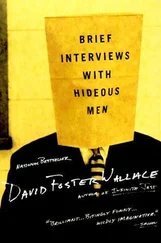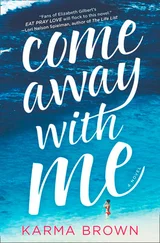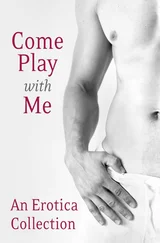Scott MacDonald - A Critical Cinema 2 - Interviews with Independent Filmmakers
Здесь есть возможность читать онлайн «Scott MacDonald - A Critical Cinema 2 - Interviews with Independent Filmmakers» весь текст электронной книги совершенно бесплатно (целиком полную версию без сокращений). В некоторых случаях можно слушать аудио, скачать через торрент в формате fb2 и присутствует краткое содержание. Год выпуска: 1992, ISBN: 1992, Издательство: University of California Press, Жанр: Прочая документальная литература, на английском языке. Описание произведения, (предисловие) а так же отзывы посетителей доступны на портале библиотеки ЛибКат.
- Название:A Critical Cinema 2: Interviews with Independent Filmmakers
- Автор:
- Издательство:University of California Press
- Жанр:
- Год:1992
- ISBN:9780585335100
- Рейтинг книги:3 / 5. Голосов: 1
-
Избранное:Добавить в избранное
- Отзывы:
-
Ваша оценка:
- 60
- 1
- 2
- 3
- 4
- 5
A Critical Cinema 2: Interviews with Independent Filmmakers: краткое содержание, описание и аннотация
Предлагаем к чтению аннотацию, описание, краткое содержание или предисловие (зависит от того, что написал сам автор книги «A Critical Cinema 2: Interviews with Independent Filmmakers»). Если вы не нашли необходимую информацию о книге — напишите в комментариях, мы постараемся отыскать её.
A Critical Cinema 2: Interviews with Independent Filmmakers — читать онлайн бесплатно полную книгу (весь текст) целиком
Ниже представлен текст книги, разбитый по страницам. Система сохранения места последней прочитанной страницы, позволяет с удобством читать онлайн бесплатно книгу «A Critical Cinema 2: Interviews with Independent Filmmakers», без необходимости каждый раз заново искать на чём Вы остановились. Поставьте закладку, и сможете в любой момент перейти на страницу, на которой закончили чтение.
Интервал:
Закладка:
was
able to buy that new Bolex, the Rex model. Up until then I'd been using an old non-reflex model that belonged to my father. I shot
Pat's Birthday
with that new camera, and I still have it. At the rate of ten minutes of film a year, I haven't worn it out yet.
After I got my new Bolex, I took to loaning out the old one. One of the first borrowers was Carolee Schneemann. She went away with Jim Tenney for the summer and came back with the footage later used for
Fuses
[1967]. I remember her showing me this film of her and Tenney endlessly fucking, and wanting to know how I felt about it. Finally I realized that they'd had to stop and wash clothes and cook food and do other things in between the fucking, just like the rest of us, and I got over my depression.
Anyway, to get back to
Pat's Birthday:
when I'd gotten to New York, I'd met Oldenburg and other pop artists. We used to go to parties and hang out. I was on the fringe. Then they came to some of my films. I'd been introduced to Oldenburg as a guy who owned a movie camera, and he wanted to employ me (for no pay) to shoot his happenings. This is 1961, 1962. I said nix. I'd just done that film with Tinguely [
Homage to Jean Tinguely's Homage to New York
] and realized, once again, that I didn't like to use my camera as a substitute witness for myself. And I'm not a good live cameraperson anyway. But I went to all the happenings. In the spring when he'd finished them, we talked about making a real film together. I suggested doing it out in my neighborhood in Palisades, in Piermont, where
The Great Train Robbery
[1903] was shot and where Woody Allen shot
The Purple Rose of Cairo
[1985]. Allen turned that little town into a Depression town. The local joke is that he had to upgrade it about ten years to make it look right.
So Oldenburg and I hung out there and talked, and then on our appointed day a week or so later he arrived with Lucas Samaras, and Pat [Oldenburg], and one or two other people. He had a big duffel bag full
Page 34
of props, which he dumped on the floor, and we started from there. We shot for a week or ten days, about three thousand feet. I just followed him around with my camera. The golf scene was my one contribution to the action.
As we were shooting, I'd get the rushes every morning and everybody would show up to see them, which was a big mistake. I didn't know enough to realize that you don't show actors their rushes because when you cut out their best scenesand I was pretty ruthless about thatthey hate you.
I took about six months to edit the film. I agonized over it, though it was also thrilling. I developed an elaborate theory, which I won't bore you with, called "discontinuity," having to do with cutting on the basis of the interior feel of the shot rather than on either the plastic or the rational explanation of the sequence. It was no giant breakthrough, except for me. Also, I cut so as to obfuscate narrative. I did realize that if you're going to cut against narrative, it's got to be a positive thing. When you're disrupting the narrative expectations of the audience, you've got to do it in a way that makes interior sense of some kind. It was a matter of making a structure that had consecutive form, where one thing certainly led to the next, but where the specifics were chosen in ways other than story. You might go from a light frame with a lot of angular action to a lush dark one with rather static images as a matter of counterpoint. In a sense you do build up expectations and you've got to make good on them in the terms you finally set up.
I wrote something about those ideas, saying that time doesn't move forward, that things
are
going, but sideways, obliquely, down, and backward, not necessarily ahead. The sense of motion is the issue. That idea seems hard to defend, because our locomotion drives us forward with our face looking toward new things. But since that movement is toward oblivion, in my philosophy anyhow, it might as well be backward. It's a delusion to think that you're getting anywhere. Of course, there is an accumulation of experience.
When I finished editing
Pat's Birthday,
we opened it at the Charles Theater at midnight, and I took Claes with me. I'd shown
Horse Over Teakettle
[1962] there at midnight a few months before and got a big ovation for it, partly because it was about the atomic bomb and everybody had atomic bombs on the mind. But for some reason the audience for
Pat's Birthday
was antipathetic. In fact, there was some hissing, which I told Claes was the radiators, but he didn't believe me. Since then, it's slowly gathered a little momentum.
MacDonald:
The cool, deadpan, arty mood of the action seems very much of that period. The animations seem less dated.
Breer:
At the time, there was a sincere feeling that the only valid
Page 35
approach to life's absurdities was to have a certain Zen distance on everything, to be above it. To make it obvious that you
were
above it all, you would set up outrageous situations that you'd go through without batting an eye.
Anyhow, I didn't see much difference between shooting live action and animating, because in both the emphasis was on cutting. For me editing isn't just the perfunctory business of filling out the plan; editing is where I make the crucial decisions that make or break the film. It doesn't matter how good the shooting is if the editing isn't good.
MacDonald:
I've always assumed that when you animate, you prepare your cards more or less chronologically and then simply record them.
Breer:
Hell no! I don't know what I've got until I start cutting. I don't know how things are going to play off each other. When I'm shooting, I can flip a handful of cards and see five seconds of continuity. But until I get it all shot, I don't know how it's going to work. When I was a painter, the process was very different. I used to lie in bed in the morning (which I do still) and daydream, fantasize a creation of some kind. But as soon as I put my foot on the cold floor and took one step toward the easel, that feeling, that image, whatever, would start to evaporate. Every step toward the easel would kill off part of the dream. At the same time, I learned to discipline myself to replace it with equivalents. Every one of those evaporations would be replaced by some more solid idea that would allow me to unscrew the cap of the paint, squeeze it out onto the pallet, put the brush in it, and hit the canvas. It was a matter of using the original inspiration as a motor, but forgetting about the particulars I'd started out with. It's the same thing with filmmaking, but even more so. There are so many mechanical tasks to perform that the concrete replaces the ephemeral. The inspiration gets you moving, but the concrete is what you get at the end. To pretend that I can write down my dream fantasy in words and then transfer it to film later is unrealistic as far as I'm concerned and would be an unfair imposition on the editing process, which really should be as creative as the other stages.
MacDonald:
So how do you shoot? Do you get a general idea and explore it for a while, knowing that later onmuch lateryou'll make a film with it?
Breer:
That's right. Sometimes I've got a strong enough idea to carry me a year. The idea has to be able to accept a lot of definitions, even contradictory definitions, and at the same time survive the attacks I make on it. It might be something as stupid as a particular image or a feeling that the next film will be all crisp and clear. But that's how I work. I'll get a theme for the year and start drawing around it (or I'll start drawing and in the drawing I'll see how I feel that year and what it's going to be like).
Читать дальшеИнтервал:
Закладка:
Похожие книги на «A Critical Cinema 2: Interviews with Independent Filmmakers»
Представляем Вашему вниманию похожие книги на «A Critical Cinema 2: Interviews with Independent Filmmakers» списком для выбора. Мы отобрали схожую по названию и смыслу литературу в надежде предоставить читателям больше вариантов отыскать новые, интересные, ещё непрочитанные произведения.
Обсуждение, отзывы о книге «A Critical Cinema 2: Interviews with Independent Filmmakers» и просто собственные мнения читателей. Оставьте ваши комментарии, напишите, что Вы думаете о произведении, его смысле или главных героях. Укажите что конкретно понравилось, а что нет, и почему Вы так считаете.











